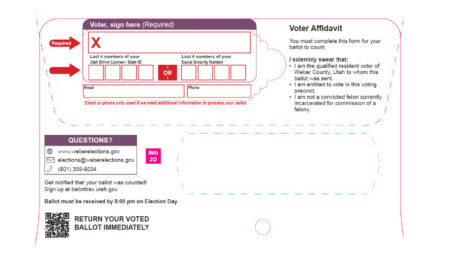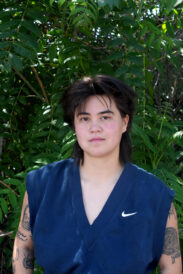As Wasatch Front housing prices rise, new program helps families get homes

Photo supplied, @ashcophoto
Abby Reader, left, with husband Kevin and their three children. The Readers recently bought a home in Washington Terrace, aided by the Rocky Mountain Homes Fund, a new nonprofit organization that helps working families get homes.WASHINGTON TERRACE — As things stood, Abby Reader, a junior high music teacher, figured she and her family would be renting long into the indefinite future.
She and her husband, Kevin, living in a rental that was too small for their growing family, had been hoping to get their own home. But given the sort of down payment required and ever-increasing home prices — focus of intense scrutiny by politicos, housing advocates and many more along the Wasatch Front — the dream seemed out of reach.
“It was extremely frustrating. We had gotten to the point we had given up,” she said.
A new program aimed at helping working professionals — think teachers, health care workers, firefighters and police officers — gave them new hope, though. The Rocky Mountain Homes Fund gave them the backing to acquire a home in Washington Terrace — the Readers’ dream ultimately came true — and program proponents are hoping they can help many, many more people across Utah.
Steve Waldrip, a representative in the Utah House from the Eden area, helped create the nonprofit program — separate from his duties as a lawmaker — and he’s thinking big. Intermountain Healthcare, the nonprofit, Salt Lake City-based health system, is involved and fund reps are seeking out additional partners.
“It’s insane what’s happening just in east-central Ogden,” said Waldrip, alluding to skyrocketing home prices. “It’s been brutal on working professionals.”
So far this year, the Rocky Mountain Homes Fund, or RMHF, has helped six Weber County families get into homes, the first program participants. Given current conditions, Waldrip doesn’t think any of them would otherwise have been able to achieve the milestone anytime soon.
And now, he’s hoping for exponential growth as RMHF reps seek out new investors and partners in the initiative, which aids with home down payments and in securing affordable financing. With more money, Waldrip is hoping to assist more families, perhaps as many as 60 in the next RMHF round. More specifically, from an initial funding pot of around $2 million, he’s hoping to boost that, at least initially, to $10 million. In years to come, he hopes to grow the funding available to as much as $50 million and expand the program’s reach to Washington, Cache, Salt Lake and Utah counties.
In the Reader family’s case, the program helped them move from a 900-square-foot rental in Roy to a 2,100-square-foot home in Washington Terrace. The couple have three young kids, so that gives everyone more space to move around. Significantly, it also gives them a big investment for the future.
“This is our first big investment that we really made. It feels good, we’re making progress,” said Abby Reader, a music teacher at Sand Ridge Junior High School in Roy.
DOWN PAYMENTS, INTEREST RATES
The housing crunch in Utah stems in part from a lack of homes for people to buy, which pushes prices up. In Weber County, the median home price currently sits at around $400,000 while the figure is $550,00 in Salt Lake County, a 28% jump from last year, according to UtahRealEstate.com, an industry organization.
The RMHF can’t necessarily address the housing shortage, but it helps address some of the issues that make it hard for families with moderate incomes to pay the price of getting a home. Notably, it assists in covering the down payment on a home, typically 20% of its value. It also helps homeowners get a reasonable interest rate on their home loans so they can afford the monthly mortgage payments.
Via equity splits, RMHF holds a partial stake in the homes of the families it aids, helping keep costs for the buyers in check. But the homeowners can refinance and buy out the RMHF stakes as the years progress and that’s the hope.
Likewise, the aim is for investors in the program to get a return on the funding they put up to help the families. “It’s not charity,” Waldrip said.
For Intermountain Healthcare, the hope by aiding in the effort is to bolster “health outcomes,” that is, actually improve the health of program participants. The health system, which operates McKay-Dee Hospital in Ogden, pitched in $1 million.
“The body of evidence suggests that improving housing stability alone may help increase access to regular healthcare, and this increased access to regular healthcare can dramatically improve health outcomes,” Intermountain said in a press release.
Nicholas Fritz, impact investing director for Intermountain, also noted that homeownership can actually reduce housing costs. That, in turn, can give families more funds for other things, like healthier food and access to recreational opportunities and exercise.
In helping create the Rocky Mountain Homes Fund, Waldrip spent around five years investigating the possibilities. RMHF, he said, is unique: “There’s nothing quite like this.”



